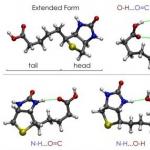The group of sulfur bacteria includes a wide variety of types of prokaryotes. Prokaryotes are single-celled organisms that do not have a clearly defined nucleus and do not have a shell. For their vital activity, sulfur bacteria oxidize hydrogen sulfide compounds to elemental sulfur, as well as sulfides, thiosulfates, and molecular sulfur.
These microorganisms belong to autotrophs (producers), synthesizing from non-organic organic matter organic:
- Purple bacteria (purple),
- Chlorobiaceae (green sulfur bacteria),
- blue-green algae (Cyanobacteria),
- colorless sulfur bacteria.
There are symbioses of microbes with mollusks, tube worms, sea urchins living in the air zone of silt (mineral and organic mixture at the bottom of reservoirs).
But not all autotrophs are producers. Some of them produce organic substances themselves and absorb them themselves. Such organisms are considered decomposers (they convert dead remains at the bottom of reservoirs into inorganic substances) and producers at the same time. Autotrophs are divided into photosynthetic and energy-producing by chemosynthesis.
Microorganisms that feed themselves through photosynthesis
Sulfur bacteria are classified as photosynthetic organisms that use sunlight as an energy source. This method is called photosynthesis. Some multicellular algae and archaea that live in water bodies are photosynthetic.
Purple sulfur bacteria belong to the photosynthetic type. There are more than 50 species. They are gram-positive, there are types capable of movement with the help of flagella and non-motile ones. They reproduce by division. They live in oxygen-free environments near the surface of fresh and salt water. Molecular sulfur is used as a carbon source, which tends to accumulate in the periplasmic space (a cavity consisting of an additional membrane in the cell wall of a microorganism).
Blue-green algae, or cyanobacteria, are also photosynthetic, gram-negative, and capable of producing oxygen. They are descendants of the most ancient microbes on earth. The origin of stomatolites - products of their vital activity found today - dates back to 2.5-3.5 billion years ago.
Green sulfur bacteria do not stain by Gram, have rod-shaped or egg-shaped cells, can accumulate glycogen (carbohydrate reserves), and are mostly immobile. Green sulfur bacteria have a cavity filled with gas, allowing them to dive to different depths (gas vacuoles).
The source of carbon is carbon dioxide. Green sulfur bacteria practically do not form colonies; they grow under purple colonies. They were discovered in the waters of hydrothermal vents at a depth of more than 2000 meters in Mexico. There are two groups: green sulfur bacteria that can exist at great depths without light and those that require light.
Chemosynthesis
Microorganisms that obtain energy as a result of processing inorganic compounds (chemosynthesis) are called chemotrophs. This type includes ammonia-oxidizing nitrifiers (Nitrobacteraceae), hydrogen sulfide-processing sulfur bacteria and iron-oxidizing iron bacteria (Geobacter).
Chemosynthesis was first discovered by S.N. Vinogradsky in the process of studying filamentous sulfur bacteria. Scientists also discovered iron bacteria, which differ from sulfur bacteria in that they use a method for the oxidation of divalent iron to trivalent iron. As a result, manganese and iron ores formed at the bottom of rivers, seas, and swamps.
Among the currently existing organisms, there are those whose belonging to any one is constantly debated. This happens with creatures called cyanobacteria. Although they don’t even have an exact name. Too many synonyms:
- blue green algae;
- cyanobionts;
- phycochrome crushers;
- cyanea;
- slime algae and others.
So it turns out that cyanobacteria is a completely small, but at the same time such a complex and contradictory organism that requires careful study and consideration of its structure in order to determine its exact taxonomic affiliation.
History of existence and discovery
Judging by the fossil remains, the history of the existence of blue-green algae goes back far into the past, several million years ago. Such conclusions were made possible by studies of paleontologists who analyzed rocks (sections thereof) of those distant times.
Cyanobacteria were found on the surface of the samples, the structure of which was no different from that of modern forms. This indicates high degree the adaptability of these creatures to different conditions habitat, to their extreme endurance and survival. It is obvious that over millions of years there have been many changes in the temperature and gas composition of the planet. However, nothing affected the viability of the cyan.
In modern times, a cyanobacterium is a single-celled organism that was discovered simultaneously with other forms of bacterial cells. That is, Antonio Van Leeuwenhoek, Louis Pasteur and other researchers in the 18th-19th centuries.
They were subjected to more thorough study later, with the development of electron microscopy and modernized methods and methods of research. The features possessed by cyanobacteria have been identified. The structure of the cell includes a number of new structures not found in other creatures.

Classification
The question of determining their taxonomic affiliation remains open. So far, only one thing is known: cyanobacteria are prokaryotes. This is confirmed by such features as:
- absence of nucleus, mitochondria, chloroplasts;
- presence of murein in the cell wall;
- molecules of S-ribosomes in the cell.
However, cyanobacteria are prokaryotes, numbering about 1,500 thousand species. All of them were classified and combined into 5 large morphological groups.
- Chroococcal. A fairly large group that unites solitary or colonial forms. High concentrations of organisms are held together by a common mucus secreted by the cell wall of each individual. In terms of shape, this group includes rod-shaped and spherical structures.
- Pleurocapsaceae. Very similar to the previous forms, however, a feature appears in the form of the formation of beocytes (more on this phenomenon later). The cyanobacteria included here belong to three main classes: Pleurocaps, Dermocaps, Myxosarcina.
- Oxillatoria. The main feature of this group is that all cells are united into a common mucus structure called a trichome. Division occurs without going beyond this thread, inside. Oscillatoria include exclusively vegetative cells that divide in half asexually.
- Nostocaceae. Interesting for their cryophilicity. They are able to live in open icy deserts, forming colored coatings on them. The so-called “blooming of ice deserts” phenomenon. The forms of these organisms are also filamentous in the form of trichomes, but reproduction is sexual, with the help of specialized cells - heterocysts. The following representatives can be included here: Anabens, Nostoks, Calothrix.
- Stigonematodes. Very similar to the previous group. The main difference is in the method of reproduction - they are able to divide multiple times within one cell. The most popular representative of this association is Fisherella.
Thus, cyanides are classified according to morphological criteria, since many questions arise regarding the rest and confusion results. Botanists and microbiologists common denominator in the taxonomy of cyanobacteria they cannot yet come.

Habitats
Due to the presence of special adaptations (heterocysts, beocytes, unusual thylakoids, gas vacuoles, the ability to fix molecular nitrogen, and others), these organisms settled everywhere. They are able to survive even in the most extreme conditions, in which no living organism can exist. For example, hot thermophilic springs, anaerobic conditions with a hydrogen sulfide atmosphere, with a pH less than 4.
Cyanobacteria is an organism that survives calmly on sea sand and rocky outcrops, ice blocks and hot deserts. You can recognize and determine the presence of cyanides by the characteristic colored coating that their colonies form. The color can vary from blue-black to pink and purple.
They are called blue-green because they often form a blue-green mucus film on the surface of ordinary fresh or salt water. This phenomenon is called “water bloom”. It can be seen on almost any lake that begins to become overgrown and swampy.

Features of cell structure
Cyanobacteria have the usual structure for prokaryotic organisms, but there are some peculiarities.
The general plan of the cell structure is as follows:
- cell wall made of polysaccharides and murein;
- bilipid structure;
- cytoplasm with freely distributed genetic material in the form of a DNA molecule;
- thillacoids, which perform the function of photosynthesis and contain pigments (chlorophylls, xanthophylls, carotenoids).

Types of specialized structures
First of all, these are heterocysts. These structures are not parts, but the cells themselves as part of a trichome (a common colonial thread united by mucus). When viewed under a microscope, they differ in their composition, since their main function is the production of an enzyme that allows the fixation of molecular nitrogen from the air. Therefore, there are practically no pigments in heterocysts, but there is quite a lot of nitrogen.
Secondly, these are hormogonies - areas torn out from the trichome. Serve as breeding sites.
Beocytes are unique daughter cells, derived en masse from one mother cell. Sometimes their number reaches a thousand in one division period. Dermocaps and other Pleurocapsodiums are capable of this feature.
Akinetes are special cells that are at rest and included in the trichomes. They are distinguished by a more massive cell wall rich in polysaccharides. Their role is similar to heterocysts.
Gas vacuoles - all cyanobacteria have them. The structure of the cell initially implies their presence. Their role is to take part in the processes of water blooming. Another name for such structures is carboxysomes.
They certainly exist in plants, animals, and bacterial cells. However, in blue-green algae these inclusions are somewhat different. These include:
- glycogen;
- polyphosphate granules;
- Cyanophycin is a special substance consisting of aspartate and arginine. Serves for the accumulation of nitrogen, since these inclusions are located in heterocysts.
This is what cyanobacteria has. The main parts and specialized cells and organelles are what allow cyanides to carry out photosynthesis, but at the same time be classified as bacteria.

Reproduction
This process is not particularly difficult, since it is the same as that of ordinary bacteria. Cyanobacteria can divide vegetatively, parts of trichomes, an ordinary cell in two, or carry out the sexual process.
Often specialized cells, heterocysts, akinetes, and beocytes, participate in these processes.
Methods of transportation
The cyanobacterial cell is covered on the outside and sometimes also with a layer of a special polysaccharide that can form a mucus capsule around it. It is thanks to this feature that the movement of cyan is carried out.
There are no flagella or special outgrowths. Movement can only be carried out on a hard surface with the help of mucus, in short contractions. Some Oscillatoriums have very unusual way movements - they rotate around their axis and simultaneously cause rotation of the entire trichome. This is how movement occurs on the surface.

Nitrogen fixation ability
Almost every cyanobacterium has this feature. This is possible due to the presence of the enzyme nitrogenase, which is capable of fixing molecular nitrogen and converting it into a digestible form of compounds. This happens in heterocyst structures. Consequently, those species that do not have them are not capable of coming out of thin air.
In general, this process makes cyanobacteria very important creatures for plant life. By settling in the soil, cyanides help flora representatives to absorb bound nitrogen and lead a normal life.
Anaerobic species
Some forms of blue-green algae (for example, Oscillatoria) are able to live in completely anaerobic conditions and an atmosphere of hydrogen sulfide. In this case, the compound is processed inside the body and, as a result, molecular sulfur is formed and released into the environment.
Tests
666-01. How is a bacterial spore different from a free bacterium?
A) The spore has a denser shell than the free bacterium.
B) A spore is a multicellular formation, and a free bacterium is unicellular.
C) The spore is less durable than the free bacterium.
D) The spore feeds autotrophically, and the free bacterium feeds heterotrophically.
Answer
Answer
666-03. Indicate a case of symbiosis of a bacterium with another organism.
A) vibrio cholera and humans
B) salmonella and chicken
B) anthrax bacillus and sheep
D) E. coli and humans
Answer
666-04. Nodule bacteria supply moth plants
A) organic matter from dead plants
B) nitrogen salts
B) nucleic acids
D) carbohydrates
Answer
666-05. Unfavorable conditions for the life of bacteria are created when
A) pickling cabbage
B) canning mushrooms
B) preparing kefir
D) laying silage
Answer
Answer
666-07. Anthrax bacteria can remain for a long time in animal burial grounds in the form
A) dispute
B) cyst
B) living cells
D) zoospore
Answer
Answer
666-09. What is characteristic of saprotrophic bacteria?
A) exist by feeding on the tissues of living organisms
C) use organic substances secreted by living organisms
Answer
666-10. Bacteria have existed on Earth for millions of years along with highly organized organisms, since
A) feed on ready-made organic matter
B) when unfavorable conditions occur, they form disputes
C) participate in the cycle of substances in nature
D) have a simple structure and microscopic dimensions
Answer
666-11. Which of the following statements is correct?
A) bacteria reproduce by meiosis
B) all bacteria are heterotrophs
B) bacteria adapt well to environmental conditions
D) some bacteria are eukaryotic organisms
Answer
666-12. The similarity in the life activity of cyanobacteria and flowering plants is manifested in the ability to
A) heterotrophic nutrition
B) autotrophic nutrition
B) seed formation
D) double fertilization
Answer
666-13. Rotting bacteria living in the soil
A) form organic substances from inorganic ones
B) feed on organic substances of living organisms
C) help neutralize poisons in the soil
D) decompose dead remains of plants and animals into humus
Answer
666-14. What are the characteristics of rotting bacteria?
A) use ready-made organic substances of living organisms
B) synthesize organic substances from inorganic ones using solar energy
C) use organic substances from dead organisms
D) synthesize organic substances from inorganic ones using the energy of chemical reactions
Answer
666-15. What bacteria are considered the planet's "orderlies"?
A) acetic acid
B) nodule
B) rotting
D) lactic acid
Answer
666-16. Dysenteric amoeba, slipper ciliates, green euglena are classified as one subkingdom because they have
A) general plan of the building
B) similar type of nutrition
B) the same methods of reproduction
D) general habitat
Answer
666-17. Which physiological process in unicellular animals is it associated with the absorption of gases by the cell?
A) food
B) selection
B) reproduction
D) breathing
1. Obligate photoautotrophic. They can only grow in light on an inorganic carbon source.
2. Optional chemoheterotrophic. Capable of heterotrophic growth in the dark using organic matter, and phototrophic growth in the light.
3. Photoheterotrophic. Used in the light organic compounds as a source of carbon.
4. Mixotrophic. Organic compounds are used as additional source carbon. They are also capable of autotrophic carbon dioxide fixation.
The product of photosynthesis of cyanobacteria is cyanophycin starch. It is deposited in small granules located between the thylakoids. Cyanobacteria are able to quickly absorb and accumulate nitrogen in the form of cyanophycin granules, usually located near the transverse partitions of the cells. Phosphates in blue-green algae are stored in polyphosphate granules, and lipids are stored in the form of droplets in the cytoplasm at the periphery of the cell.
Due to the ability to grow in extreme conditions and fix molecular nitrogen, cyanobacteria have acquired great importance in nature. These organisms are the first to colonize areas poor in nutrients. Cyanobacteria are not afraid extreme conditions. For example, single-celled cyanobacteria - Synechococcus lividus They are so resistant to acids and thermophilic that they can grow in acidic hot springs (pH 4.0; t = 70 degrees).
The morphological diversity of bacteria is shown in Figure 6.
Rice. 6. Morphological diversity of blue-green algae: A – oscillatory; B – nostok; IN - Anabena; G - lingbia; D – rivularia; E – gleocapsa; AND - Chroococcus: 1 – general form, 2 – view at low magnification, 4 – heterocyst
In lakes there are often outbreaks of mass reproduction of cyanobacteria. This process is called « bloom of water." At the same time, water bodies become oversaturated with waste products of cyanobacteria and are deprived of oxygen reserves, which negatively affects the lives of other inhabitants.
Cyanobacteria are successfully used by humans. For example, cyanobacteria of the genus bred by humans in rice fields Anabaena. These organisms live in the cavities of the leaves of tropical aquatic ferns ( Azolla) and enrich the soil with nitrogen compounds. In addition, in many countries, cyanobacteria are grown to produce a protein supplement for human and animal food.
5.5.2. Subkingdom Anoxyphotobacteria – Anoxyphotobacteria
Unlike cyanobacteria, anoxyphotobacteria are not able to release oxygen during photosynthesis. Pigments, bacteriochlorophylls and carotenoids, are localized in membranes concave into the cell. This subkingdom includes purple bacteria and chlorobiobacteria. They live in anaerobic conditions in freshwater and saltwater bodies.
5.5.3. Subkingdom Scotobacteria
Brings together diverse groups chemo- And autotrophic gram-negative prokaryotes. In relation to oxygen, aerobic, anaerobic and facultative anaerobic microorganisms. They are essential in soil fertility, as they participate in the decomposition of plant residues (mineralization), the cycle of elements in nature, and the enrichment of soil with biologically active compounds.
Thus, bacteria of the family Pseudomonadiaceae of the genus Pseudomonas can reduce nitrates; families Azotobacteriaceae sort of Azotobacter fix molecular nitrogen; families Rhizobiaceae sort of Rhizobium form nodules on the roots of legumes, entering into symbiosis with them and fixing molecular nitrogen; family Nitrobacteriaceae includes bacteria that carry out the processes of nitrification (oxidation of ammonia and nitrites) and sulfofification (oxidation of sulfur and its reduced compounds); bacteria family Cytophagaceae sort of Cytophaga carry out aerobic decomposition of cellulose, etc.
This subkingdom also includes microorganisms that live in the intestines of humans and animals, many of them are pathogenic.
Subkingdom of spirochetes - Spirochaetae
The cells of these organisms are a spirally twisted cylinder, around which a periplasmic flagellum, an axostyle, is twisted between the membrane and the cell wall, thanks to which the spirochetes move in a liquid environment.
5.5.4. Subkingdom radiant bacteria – Actinobacteria
Department of actinomycetes – Actinomycetales
Radiant bacteria tend to form mycelial colonies. These include three divisions: mycobacteria, corynebacteria, actinomycetobacteria (radiant fungi, actinomycetes).
According to the structure of the cell and chemical composition its components actinomycetes are one of the peculiar groups of bacteria. Actinomycetes form branching cells, which in many representatives develop into mycelium. Special reproductive structures can form on the mycelium. Cell motility is provided by flagella.
Actinomycetes are chemoorganoheterotrophs, most of them are aerobes. Actinomycetes are resistant to desiccation. More resistant than other bacteria to the action of many fumigants and insecticides. Some are resistant to antibacterial antibiotics. Distinctive feature actinomycetes is their ability to form physiologically diverse active substances– antibiotics, pigments, substances that cause odors in soil and water. The mycelium of actinomycetes is divided into primary (substrate) and secondary (aerial). Actinomycetes that have a positive mycelial stage usually form asexually special reproductive structures - spores, which can form on substrate and aerial mycelium or on one of them. Spores are located on hyphae or spore carriers singly, in pairs, in chains, or enclosed in sporangia.
Actinomycetes reproduce by dividing hyphae, spores, and sometimes by budding. Actinomycetes are found in the air, water bodies, and soil. Some of them are pathogens of plant and animal diseases. In the soil, actinomycetes synthesize and decompose humic substances, produce antibiotics, and participate in the nitrogen balance.
5.5.5. Subkingdom true gram-positive bacteria – Eufirmicutobacteria
Family Bacillaceae includes aerobic and obligate anaerobic bacteria, usually rod-shaped, which change the shape of the body when endospores form. Bacteria are widespread in soils, water, and the digestive tract of animals. Saprotrophs, take part in the decomposition of organic substances, can cause diseases in humans, animals and plants (genus Clostridium And Bacillus). Genus Desulfotomaculum represented by anaerobic sulfur-reducing bacteria. Some bacteria fix molecular nitrogen, some are capable of producing antibiotics.
Family Lactobacillaceae includes non-spore-forming bacteria that ferment carbohydrates to produce lactic acid (genus Lactobacillus). Bacteria are common in soils, on plants, in the gastrointestinal tract of animals and humans, and in dairy products.
Family Streptococcaceae includes bacteria playing big role in the production of fermented milk products, silage, pickling of vegetables (genus Streptococcus, Leuconostoc and others). They do not form spores; the cells are spherical or oval in shape, connected in pairs or chains of varying lengths.
Family Micrococcaceae includes aerobic or facultative anaerobic, non-spore-forming, spherical bacteria common in soils and fresh waters. Genus Staphylococcus is represented by pathogenic species found on the skin and mucous membranes of warm-blooded organisms.




